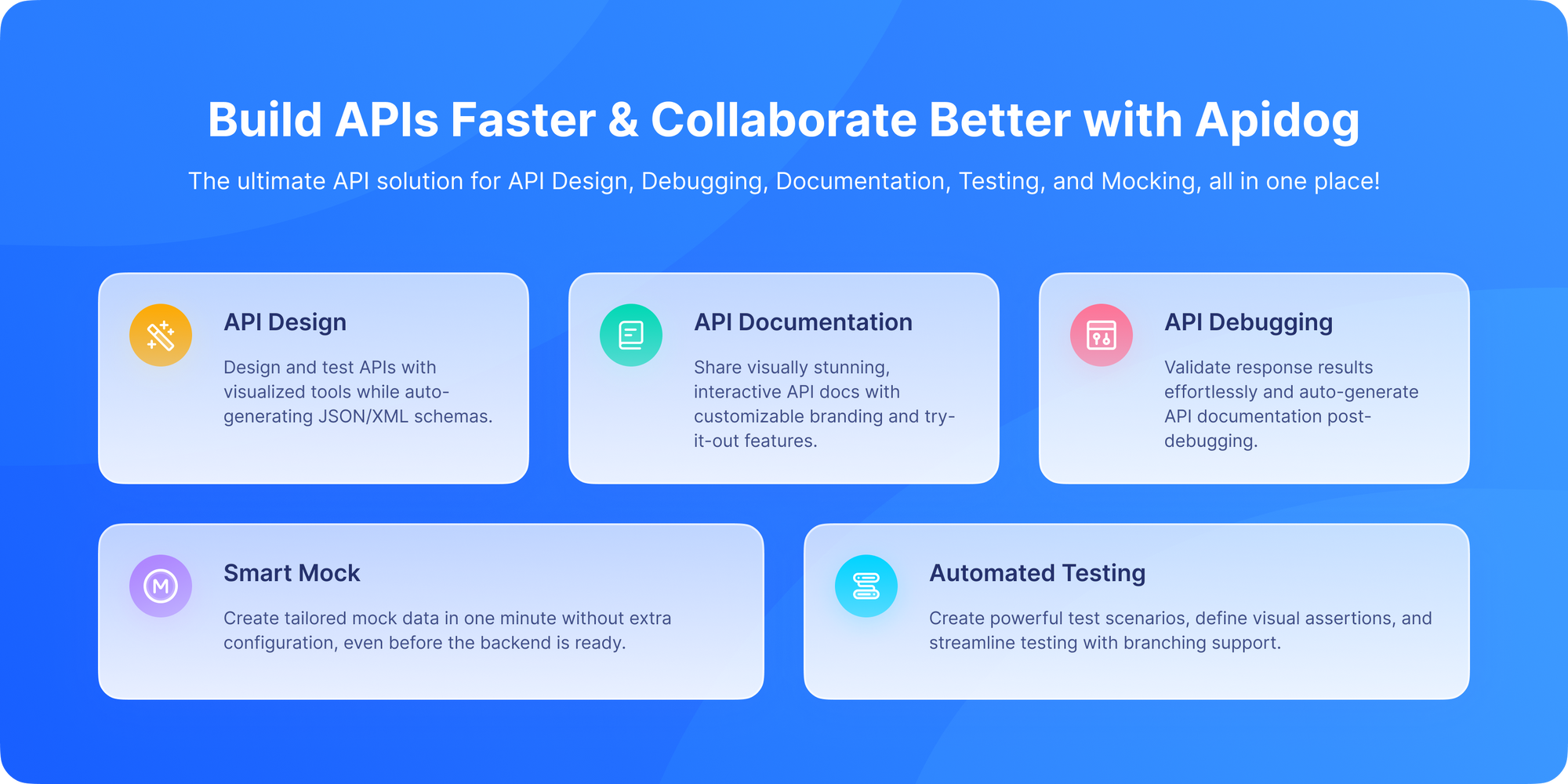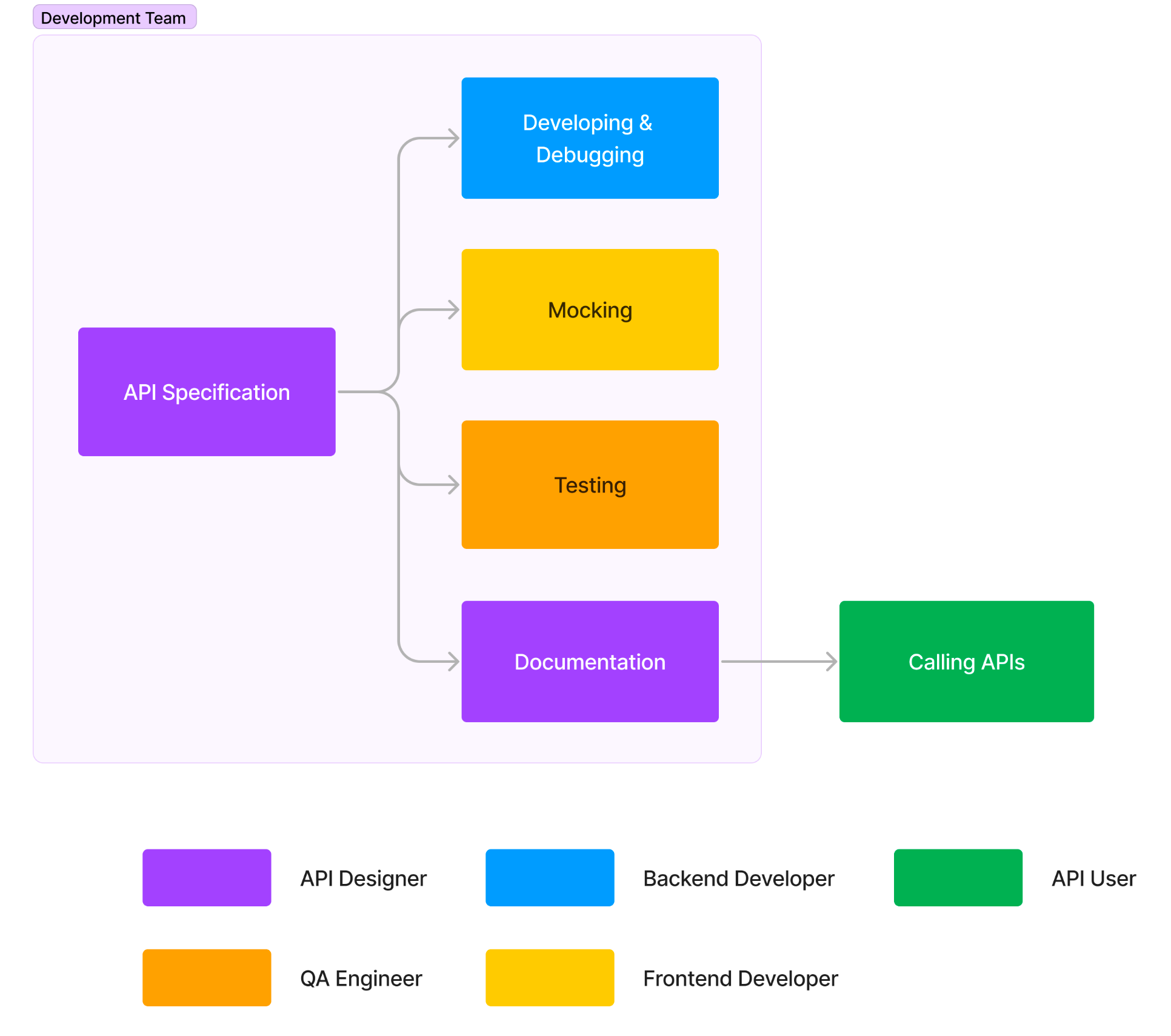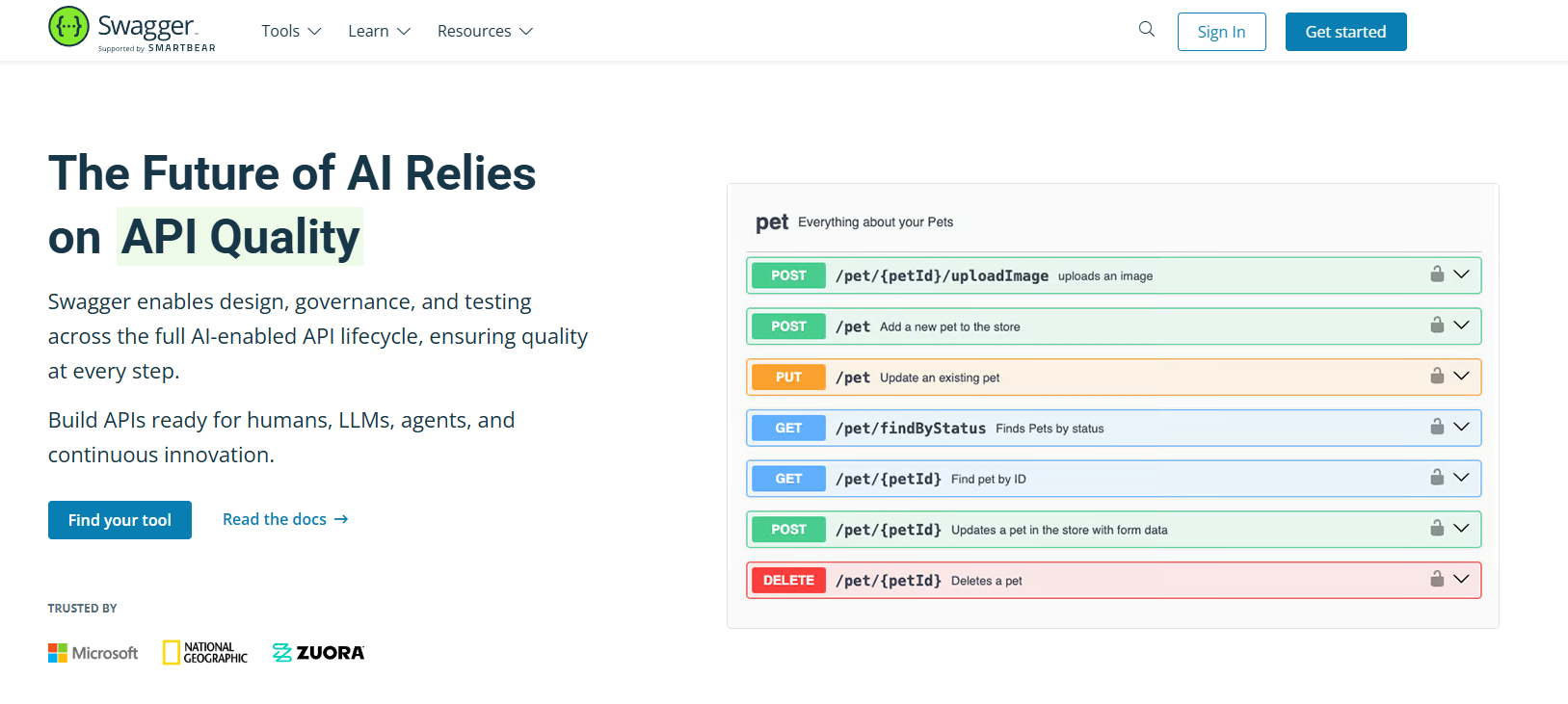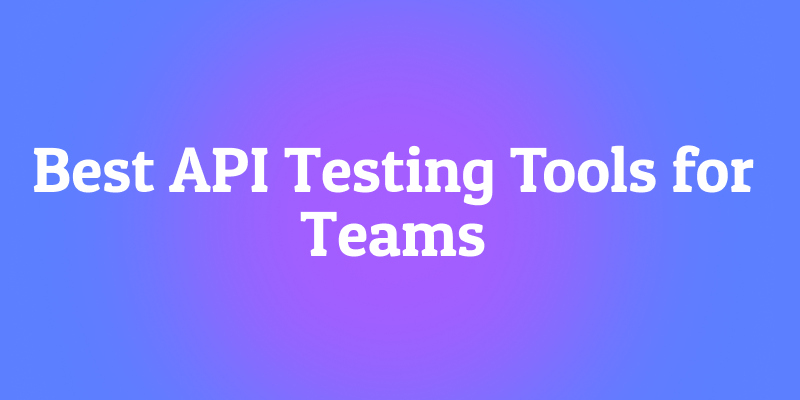Hey there, tech leads, developers, and QA pros! Let's have a real talk about one of the most critical, yet often chaotic, parts of modern software development: API testing. We've all been there. You're building a fantastic new feature, the frontend is looking slick, but then... the API integration hits a snag. A missed parameter here, an unexpected response there, and suddenly your project timeline starts looking a little wobbly.
Now, imagine doing this dance not just by yourself, but with an entire team. Spreadsheets with endpoint URLs, Postman collections saved on someone's local machine, and a flurry of Slack messages trying to figure out if the PUT request is working as expected. Sound familiar? This chaos is exactly why choosing the right API testing tool isn't just a personal preference; it's a strategic team decision. It's the difference between a well-oiled machine and a garage full of talented mechanics trying to build a car with mismatched tools.
The right tool transforms API testing from a solitary, tedious task into a collaborative, efficient, and even enjoyable process. It's about creating a single source of truth for your API contracts, streamlining workflows, and ultimately, shipping better software, faster.
But here's the catch: testing APIs isn't just about sending requests and checking responses anymore. It's about teamwork, efficiency, and collaboration.
That's why in this article, we'll explore the best API testing tools for teams, highlight what makes them great, and show how the right tool can make API collaboration effortless.
So, grab a coffee, get comfortable, and let's explore the landscape of the best API testing tools designed to empower teams, not just individuals.
What Makes an API Testing Tool "Great" for Teams?
Before we jump into the specific tools, it's crucial to establish our criteria. A great tool for a solo developer might focus on raw power and flexibility. But for a team? The priorities shift dramatically.
- Collaboration is King: This is non-negotiable. The tool must allow multiple team members to work on the same collections, environments, and tests simultaneously without creating conflicts. Features like real-time editing, shared workspaces, and clear permission controls are paramount.
- Source of Truth & Documentation: Your API tool shouldn't just be for testing; it should be the living documentation for your API. It needs to be easily accessible and understandable for everyone from backend developers to frontend engineers and even product managers.
- Automation & CI/CD Integration: In today's DevOps world, manual testing doesn't cut it. The tool must integrate seamlessly into your Continuous Integration/Continuous Deployment pipeline (think Jenkins, GitLab CI, GitHub Actions). This allows for automated regression testing with every code commit.
- Version Control & Change Management: APIs evolve. Your testing tool needs to track those changes. Integration with Git or built-in versioning for your API specs and tests is a massive advantage.
- Onboarding & Ease of Use: A tool is only as good as its adoption. If it's too complex, your team won't use it consistently. A gentle learning curve and an intuitive interface are key to ensuring everyone is on the same page.
- Powerful Testing Capabilities: Of course, it still needs to be a robust testing tool! This includes support for various authentication methods, the ability to write complex test scripts (pre-request and post-response), and comprehensive validation of responses.
With this framework in mind, let's meet the contenders. These tools treat the API spec not as a technical artifact, but as a living contract accessible, executable, and editable by everyone involved. And that brings us to our first (and favorite) pick.
The Top API Testing Tools for Collaborative Teams
1. Apidog: The All-in-One Collaborative Powerhouse

Let's start with the tool that is genuinely rethinking how teams approach API workflows. Apidog isn't just another API client; it's a unified platform that combines the functionality of Postman, Swagger, Mock, and JMeter into a single, cohesive application. This integrated approach is its superpower for team environments.

Why Apidog is a Team Dream:
- Unified API Workspace for Everything: Instead of switching between Swagger UI for documentation, Postman for testing, and another tool for mocking, Apidog brings it all together. Your API specifications (OpenAPI), test cases, mock servers, and performance tests live in one place. This drastically reduces context-switching and ensures consistency across design, development, and testing phases.
- Real-Time Collaboration: Imagine a Google Docs-like experience for your APIs. Team members can see edits happening in real-time, leave comments on specific endpoints, and work together on defining schemas and tests. This eliminates the "it worked on my machine" problem and merges the design and testing phases beautifully.
- Seamless API Documentation: Apidog automatically generates beautiful, interactive API documentation from your projects. Since the documentation is directly tied to your tests and specs, it's always up-to-date. This becomes the go-to resource for your entire team and even external consumers.
- Powerful Mock Servers: Frontend developers can start their work before the backend is even built. Apidog allows you to create highly realistic mock servers based on your API design, complete with dynamic response rules. This parallelizes development and accelerates project timelines.
- Built-in Performance Testing: You don't need a separate JMeter setup for basic load testing. Apidog lets you convert your functional API tests into performance tests with a few clicks, helping you understand how your APIs behave under stress.
The Bottom Line: If your team is tired of the friction caused by using multiple, disconnected tools, Apidog is the answer. Its core philosophy is centered on collaboration and streamlining the entire API lifecycle, making it our top recommendation for teams looking to modernize their workflow.
2. Postman: The Familiar Titan

It's impossible to talk about API testing without mentioning Postman. It's the tool that popularized API clients for a generation of developers. For many, it was their first introduction to organized API testing.
Key Features:
- Intuitive request-building interface.
- Support for automation via scripts.
- Environment and variable management.
- Built-in mock servers (limited).
- Basic team collaboration with cloud sync.
Postman's Strengths for Teams:
- Workspaces and Collections: Postman's organization system is robust. You can create team workspaces, organize APIs into collections, and use environments to manage variables across different stages (dev, staging, prod).
- Extensive Ecosystem and API Network: The public API network allows you to discover and fork collections from popular services, which can be a huge time-saver. Furthermore, its extensive library of integrations and its own API for managing collections programmatically is a powerful feature.
- Comprehensive Feature Set: From automated testing with the Newman CLI runner to monitoring and rudimentary mocking, Postman is a feature-rich platform.
Where It Can Stumble for Collaboration:
- The "Workspace Switcher" Tax: As your organization grows, managing workspaces, roles, and permissions can become complex and expensive. The free tier has significant limitations on the number of collaborators.
- Disconnected Design-First Flow: While it has API schemas, Postman's origins are in testing after the code is written. A true design-first approach can feel a bit bolted on compared to a unified tool like Apidog.
- Performance: Many long-time users report that the app can become sluggish with large collections.
The Verdict: Postman is a powerful, established player. If your team is already deeply invested in its ecosystem and your collaboration needs are relatively straightforward, it remains a solid choice. However, be prepared for potential cost and complexity as you scale.
3. Insomnia: The Developer-Friendly Alternative

Insomnia has earned a loyal following, particularly among developers who prefer a clean, open-source-first approach. It’s often seen as a more lightweight and focused alternative to Postman.
Key Features:
- Clean and fast UI.
- Supports REST, GraphQL, and gRPC.
- Plugin system for customization.
- Scripting and automation capabilities.
Why Teams Love Insomnia:
- Clean and Intuitive UI: The interface is uncluttered and a joy to use, which lowers the barrier to entry for new team members.
- Git Syncing (With Insomnia Sync): For teams that live and breathe Git, Insomnia's sync feature is a killer app. You can store your API designs, tests, and environments directly in your repository, providing built-in version control and a familiar collaboration model.
- Plugin Ecosystem: Its plugin system allows teams to extend its functionality to fit their specific needs, from custom authentication flows to unique data handling.
- Strong Open-Source Core: The core features are open-source, which is great for transparency and for teams on a tight budget.
Potential Drawbacks for Larger Teams:
- Collaboration is a Paid Feature: While the core app is free, real-time collaboration (like the one in Apidog) is part of the paid "Insomnia Teams" plan.
- Less All-in-One: While it has mocking and some documentation features, its scope is more focused on the API client and design aspect compared to the comprehensive lifecycle approach of Apidog.
The Verdict: Insomnia is an excellent choice for developer-centric teams that prioritize a great UX and deep Git integration. It's a fantastic tool, but for full-blown, real-time collaboration across different roles (QA, PMs), you'll likely need the paid tier.
4. SwaggerHub: Perfect for API Design and Documentation

SwaggerHub (by SmartBear) is part of the Swagger/OpenAPI ecosystem, focusing on API design-first workflows.
Key Features:
- Centralized API design and documentation hub.
- OpenAPI/Swagger support.
- Collaboration and version control for API specs.
- Integration with CI/CD tools.
Collaboration:
Teams can co-edit API definitions and manage versions in shared projects.
It’s particularly useful when you need to maintain strict OpenAPI compliance.
However, SwaggerHub doesn’t include testing or mocking capabilities natively meaning you’ll need other tools for validation and runtime checks.
5. Katalon Platform: The QA-Centric Powerhouse

Katalon is a well-known name in the test automation space, and its API testing capabilities are part of its broader, robust platform. It's designed with testers and QA engineers squarely in mind.
Key Features:
- Automated test generation.
- CI/CD integration.
- Reporting and analytics.
- Data-driven testing.
Katalon's Team Advantages:
- Codeless and Code-Based Testing: This is a huge benefit for mixed-skill teams. QA analysts with less coding experience can build tests using a smart recorder and GUI, while developers can dive into the script mode for more complex logic.
- Centralized Test Management: Katalon TestOps provides a dashboard for managing all your API (and web/mobile) tests in one place. You get detailed reports, analytics, and insights into your test results, which is invaluable for large teams.
- Strong CI/CD Integration: It's built for automation, with native integrations for all the major CI/CD tools and a powerful command-line interface.
Considerations for Developers:
- Heavier Footprint: Katalon is a comprehensive platform, which can feel "heavier" than a dedicated API client like Apidog or Insomnia. It might be overkill if you only need API testing.
- Learning Curve: The sheer number of features can be intimidating for teams that just want to quickly test an endpoint.
The Verdict: Katalon Platform is ideal for organizations with a dedicated QA team that manages testing for web, mobile, and APIs from a single, powerful platform. It's less about quick, developer-led API exploration and more about enterprise-grade test automation.
6. SoapUI (ReadyAPI): The Enterprise Veteran

When it comes to testing SOAP and REST APIs with a focus on complex, data-driven scenarios, SoapUI (and its commercial big brother, ReadyAPI) is a veteran. It's known for its raw power and depth.
Key Features:
- Supports REST, SOAP, and GraphQL.
- Advanced functional and load testing.
- Detailed reporting.
- Automation and CI/CD integrations.
SoapUI/ReadyAPI for Team Projects:
- Unmatched for Complex Scenarios: If your team deals with complex workflows, data-driven testing (pulling data from databases and CSV files), and service virtualization, ReadyAPI is incredibly powerful.
- Integration with CI/CD Pipelines: Through its command-line tool,
testrunner, it fits well into automated build pipelines. - Reusability: The concept of "LoadTests" that you can create from functional "TestCase"s is very efficient.
Where It Might Feel Cumbersome:
- Steep Learning Curve: The interface is not as modern or intuitive as some of the newer tools. Onboarding new team members can take more time.
- Collaboration Features: While ReadyAPI has team collaboration features, they often feel more traditional and less seamless than the real-time, cloud-native collaboration offered by Apidog.
The Verdict: SoapUI/ReadyAPI is the go-to for large enterprises with very complex API testing needs, especially those still heavily using SOAP services. For most modern teams building REST/GraphQL APIs, it might feel like using a sledgehammer to crack a nut.
7. ReadyAPI: Enterprise-Level Collaboration

ReadyAPI (also by SmartBear) is built on top of SoapUI and geared toward enterprise-scale API testing.
Key Features:
- Advanced test automation and performance testing.
- Security scanning.
- Data-driven test scenarios.
- Enterprise collaboration support.
It’s powerful but comes at a steep cost, which may be overkill for smaller teams.
Honorable Mentions
- Paw (Mac Only): Elegant UI and strong scripting support.
- Hoppscotch: Open-source, browser-based alternative to Postman.
- RapidAPI: Great for discovering and testing public APIs.
Comparing the Best API Testing Tools for Teams
Here’s a quick comparison table to help you decide:
| Tool | Collaboration | Mocking | Automation | Documentation | Ease of Use | Ideal For |
|---|---|---|---|---|---|---|
| Apidog | ✅ Real-time, roles, team sync | ✅ Built-in | ✅ | ✅ Auto-generated | ⭐⭐⭐⭐⭐ | Teams & enterprises |
| Postman | ⚙️ Shared workspaces | ⚙️ | ✅ | ✅ Basic | ⭐⭐⭐⭐ | Small to mid teams |
| Insomnia | ⚙️ Basic sync | ❌ | ✅ | ❌ | ⭐⭐⭐⭐ | Solo devs |
| SwaggerHub | ✅ Spec-based | ❌ | ⚙️ | ✅ Excellent | ⭐⭐⭐ | API architects |
| SoapUI | ⚙️ Via ReadyAPI | ✅ | ✅ | ⚙️ | ⭐⭐⭐ | Enterprises |
| Katalon | ⚙️ | ✅ | ✅ | ⚙️ | ⭐⭐⭐ | QA teams |
| ReadyAPI | ✅ | ✅ | ✅ | ⚙️ | ⭐⭐⭐ | Large orgs |
Why Apidog Wins for Team Collaboration
Let's be real: most tools excel at one or two things but few master the entire API lifecycle.
Apidog stands out because it was built for collaboration from day one.
From real-time co-editing to environment sharing, it eliminates communication gaps and empowers every team member to contribute.
So whether you're a small startup or a large enterprise, Apidog grows with your team, adapting to your workflows and scaling effortlessly.
Key Features to Look for in a Team-Oriented API Testing Tool
Before you choose, ask:
- Is collaboration real-time and free? (No per-user paywalls)
- Can non-devs understand and use it? (Visual UI > code-only)
- Does mocking auto-generate from specs? (Enables parallel work)
- Is documentation live and interactive? (Not a PDF export)
- Are tests versioned with API design? (No drift between spec and test)
- Can you publish public/private docs easily? (For external partners)
Apidog answers "yes" to all six. Most others? Not even close.
Conclusion: Your Team's Workflow is the Deciding Factor
So, where does this leave us? Ultimately, the "best" tool is the one that best fits your team's specific workflow, budget, and skill sets.
- If your team values a unified, collaborative environment that bridges the gap between design, development, testing, and documentation, then Apidog is the clear and modern choice. Its integrated approach eliminates tool sprawl and creates a truly collaborative hub for your APIs.
- If you're deeply embedded in the Postman ecosystem and its vast API network, sticking with it might make sense, but keep a close eye on costs and complexity as you grow.
- If your team is small, developer-heavy, and loves Git, Insomnia offers a fantastic and intuitive experience.
- If you have a dedicated QA team that needs to automate tests across web, mobile, and API with both codeless and code-friendly options, Katalon Platform is a powerful contender.
- If you're in an enterprise environment dealing with extremely complex, data-heavy API scenarios (including SOAP), ReadyAPI remains an industry stalwart.
The trend is clear: the future of API tools is moving towards integration and seamless collaboration. The days of siloed design, testing, and documentation are numbered. Therefore, when you evaluate these tools, don't just think about making a single developer's life easier. Think about how you can create a smoother, faster, and more reliable software delivery process for your entire team. The right choice will pay dividends in productivity, quality, and team harmony.



